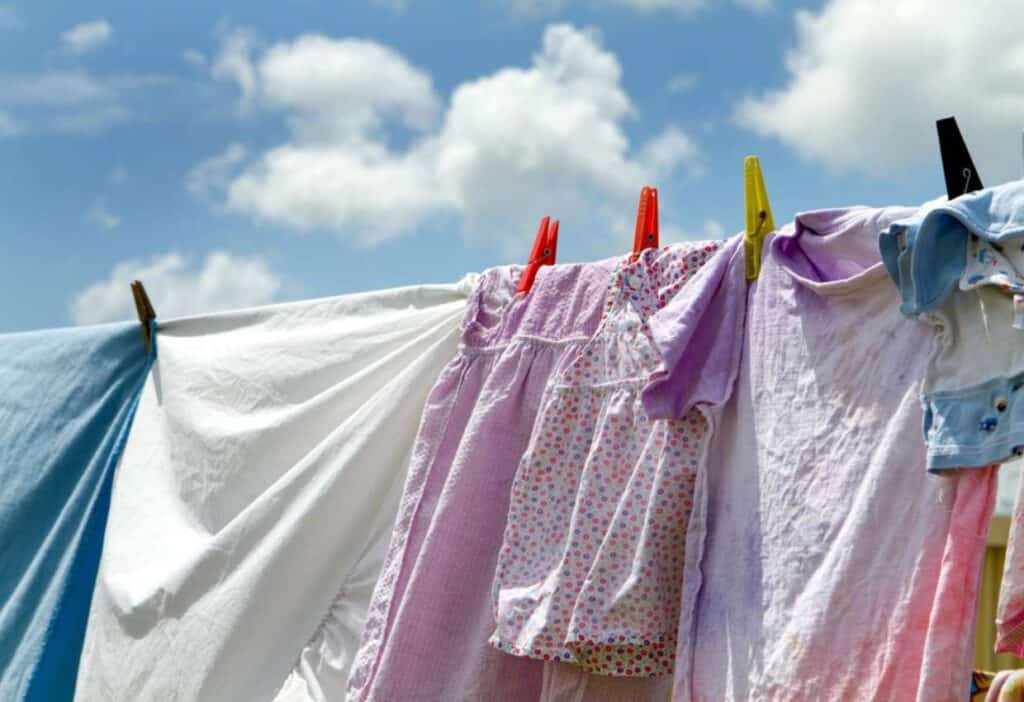Despite technological advancements and stricter energy-efficient standards for clothes washers and dryers, a quiet revolution is currently changing how Americans handle one of the most mundane household chores: laundry.

Learn why more Americans are turning away from the convenience of modern washing machines and dryers. They’re opting instead for classic laundry methods such as hanging laundry outdoors on lines to dry, a practice that some states have banned.
New energy-efficient laundry appliance standards target 2028
Are you concerned about the cost and energy consumption of your clothes washer and dryer? If so, you aren’t alone. Several groups, including the Consumer Federation of America and various energy-efficient advocates, have long complained about the impact of laundry appliances on household budgets and our national carbon footprint.
In February 2024, the U.S. Department of Energy announced updated residential clothes washer and dryer standards. Manufacturers must meet these new energy efficiency standards by March 1, 2028. These standards are forecasted to save average American households $100 a year in lower utility bills.
There’s a small but growing movement to forego these appliances altogether and return to more traditional laundry methods. Yet some laundry activists are impatient with this low movement towards more energy-efficient appliances. Instead, they’re rolling up their sleeves to revisit older methods of cleaning and drying clothes.
These methods include using homemade laundry detergent recipes, hand washing with a bucket and washboard and hanging clothes outside to dry. But not everyone is thrilled with the reversion to these classic methods.
Line-drying breaks HOA clothesline bans
Line-drying laundry is the simple practice of hanging clothes on a line to dry. It is cheap, energy-efficient and requires minimal investment. All you need is a clothesline and clothespins or a foldable drying rack.
The classic method of line-drying clothing is still common across Europe. However, not everyone loves the idea of seeing their neighbors’ clothes clotheslines flapping on the line over their backyard gardens.
In some places in the United States, landlords and homeowners’ associations (HOAs) have banned outdoor clotheslines and prohibited outdoor laundry drying, citing aesthetic concerns.
Clashes between the right-to-dry groups and those opposed to the practice have resulted in 19 states outlawing clothesline bans and upholding people’s right to air their laundry outdoors, which is good news for line-drying laundry advocates. Most recently, in 2023, Pennsylvania introduced a bill to allow condo owners to hang dry clothes outside.
Benefits of eco-friendly laundry practices
The appeal of traditional laundry methods may lie in their perceived benefits. Hanging laundry to dry saves money and bypasses the need for an energy-hogging clothes dryer.
Line drying offers other benefits, as well. For example, it minimizes wrinkles and reduces the need for ironing, further cutting your energy consumption. Clothes dried outdoors smell fresh and clean, and they aren’t subjected to the wear-and-tear of tumbling in a clothes dryer.
These classic laundry methods are part of the growing simple living movement, a return to simpler, traditional methods of homemaking popularized on various social media platforms. Accounts such as LaundryTok, with more than 13,000 followers, celebrate mundane household chores and simple lifestyles. Other simple living accounts showcase activities such as sourdough baking, canning, preserving foods and raising backyard chickens, gaining thousands of followers on YouTube, TikTok and Instagram.
“There is nothing, and I mean nothing, that smells as lovely as line-dried laundry,” says Laura Sampson of Alaska-based Little Frugal Homestead. “Even though we live where it’s snowy for a large portion of the year, we make an effort to put our sheets on the line every Sunday. Even if they don’t dry and we finish them in the dryer it’s worth it.”
Energy-efficient laundry drying tips
Whether you hand-wash your laundry, use a washboard and wringer washer system or even use an electric washing machine, follow these tips to successfully and efficiently dry your clothes.
First, wring out as much water as possible to reduce the time it takes to dry your laundry. If you use a traditional electric washing machine, run an extra spin cycle to remove any excess water.
Avoid folding clothing over the clothesline when hanging garments on a line. Doing so results in a double layer of cloth, extending the required drying time. Instead, use clothespins to hang the garment from the line. This allows the air to circulate causing your clothes to dry more quickly.
When hanging skirts, shorts or pants, hang them by their cuffs instead of their waistband. This practice results in a faster drying time and fewer wrinkles. Also, turn hoods on hoodies and pockets on all garments inside out to help them dry faster.
Try hang-drying to save energy and money
Hanging laundry to dry instead of using an electric or gas dryer saves money and energy. While some neighborhoods across America have chosen to ban line drying, more states are outlawing those bans, making it easier to practice this simple, necessary and effective household chore.
Sarita Harbour is a long-time business and finance writer. She created An Off Grid Life to help people become more self-reliant.